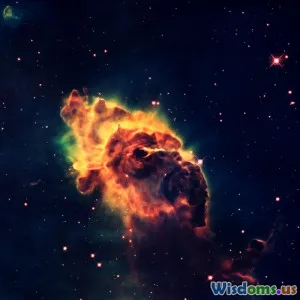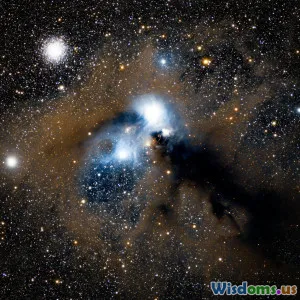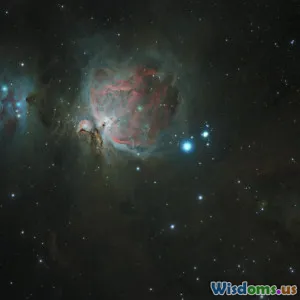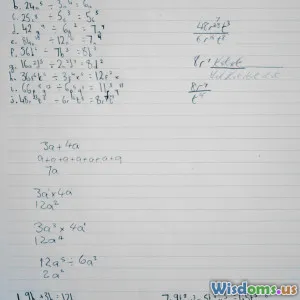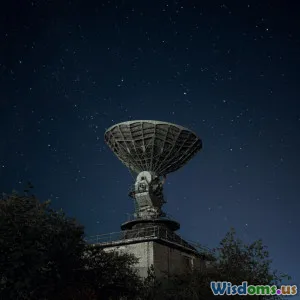
Ten Unsolved Mysteries About Fast Radio Bursts in the Universe
7 min read Explore ten baffling mysteries surrounding fast radio bursts (FRBs) that challenge our understanding of the cosmos. (0 Reviews)
Ten Unsolved Mysteries About Fast Radio Bursts in the Universe
Introduction
Imagine a cosmic flash lasting mere milliseconds but packing the energy of hundreds of millions of suns. These are fast radio bursts (FRBs), brief yet intense pulses of radio waves from distant galaxies that have mystified astronomers since their discovery in 2007. Despite hundreds of detections in the last decade, FRBs pose some of the most enticing puzzles in space science. What creates these bursts? Why do some repeat while others don’t? This article unpacks ten of the most compelling unsolved mysteries surrounding FRBs, shining light on one of the universe’s newest cosmic riddles.
1. What Triggers Fast Radio Bursts?
The fundamental enigma is the origin of FRBs. Various models suggest dramatic astrophysical events: collisions of neutron stars, highly magnetized neutron stars called magnetars, or even exotic phenomena like cosmic strings or alien technology. For example, the Galactic magnetar SGR 1935+2154 was linked to an FRB-like burst in 2020, supporting the magnetar hypothesis. Yet, not all FRBs fit into this scenario. The mysterious triggers remain a hotly debated topic.
2. Why Do Some FRBs Repeat?
Only a minority of known FRBs return sporadically. The first repeater, FRB 121102, has been tracked to a dwarf star-forming galaxy about 3 billion light-years away, showing bursts with no predictable pattern. Understanding why some sources repeat while others are seemingly one-off events could reveal different progenitors or emission mechanisms.
3. How Do FRB Signals Travel Through Space?
FRB signals arrive dispersed—a signature of their long journey through cosmic plasma. Yet, the degree of dispersion and scattering provides clues about the density and structure of the intergalactic medium and the source’s local environment. Unraveling these effects can reveal the missing baryonic matter—otherwise invisible ordinary matter—in the universe.
4. Can FRBs Be Used as Cosmic Probes?
Because their signals interact with everything they encounter, FRBs can serve as natural probes to measure cosmic phenomena like dark matter distribution, magnetic fields across galaxies, and intergalactic gas. However, extracting precise cosmological data requires understanding the bursts’ intrinsic properties—still an unresolved challenge.
5. What Explains the Wide Range of Burst Durations and Energies?
FRBs display a bewildering diversity: some last under a millisecond, others longer, with energy outputs differing by orders of magnitude. This variety could reflect different emission mechanisms—or a mix of sources. Deciphering this would refine our understanding of extreme cosmic processes.
6. Why Do Some FRBs Show Complex Time-Frequency Structures?
Many bursts show sub-pulse structures, frequency drifting, and other intricate signatures. For instance, FRB 180916.J0158+65 exhibits periodic activity windows and downward frequency drifts in sub-bursts. This complexity challenges simple source models and suggests dynamic magnetospheres or plasma lensing effects.
7. Where Exactly in Their Host Galaxies Do FRBs Occur?
Localization efforts, enhanced by interferometers like CHIME and ASKAP, have placed several FRBs within specific galactic environments —, such as star-forming regions, outskirts, or near massive black holes. Pinpointing the exact environment can provide clues about progenitors and local physical conditions.
8. Are There Multiple Types of FRBs?
The observed diversity suggests we may be dealing with several classes of fast radio bursts, each with different origins and mechanisms—akin to supernova classifications. Recognizing and categorizing these can reshape our models and help predict their behavior.
9. What Physics Underpins the Coherent Radio Emission?
FRBs’ brightness temperatures imply a coherent radiation mechanism, unlike thermal emissions. Proposed theories include coherent curvature radiation in magnetar magnetospheres or maser amplification in shockwaves. However, the exact microphysics remains elusive, driving active theoretical work.
10. Could FRBs Carry Messages from Extraterrestrial Intelligence?
While speculative and unsupported by evidence, the idea that FRBs represent artificial signals has captured public imagination and some scientific attention. The astounding energetics and repeating behaviors provoke open but cautiously skeptical inquiry into potential technosignatures.
Conclusion
Fast radio bursts stand at the frontier of cosmic discovery—a tantalizing enigma with each detection peeling back a layer of the unknown universe. These brief flashes challenge astronomers not only to understand their origins but also to harness them as novel tools to probe cosmic matter and physics. The mysteries about FRBs—from their diverse behavior and origins to their powerful, complex signals—continue to perplex, challenge, and inspire. As telescopes grow more sensitive and localization sharper, the coming years promise pivotal breakthroughs and possibly even revolutionary insights into the universe’s most fleeting yet potent signals.
“Each FRB detection is a signpost pointing us towards new physics and astrophysical marvels —- a cosmic puzzle that humbles us and sparks our curiosity.”
— Dr. Emily Petrova, Astrophysicist specializing in transient phenomena
References & Further Reading:
- CHIME/FRB Collaboration, Nature, 2020: https://www.nature.com/articles/s41586-020-2863-y
- Petroff, E. et al. “Fast Radio Bursts.” Living Reviews in Relativity. 2019.
- Platts, E. et al., “A Living Theory Catalogue for Fast Radio Bursts.” Physics Reports, 2019.
- FRB Catalog: https://www.frbcat.org/
Disclaimer: The understanding of FRBs continues to evolve rapidly as new data are collected. This article reflects knowledge up to 2024.
Rate the Post
User Reviews
Popular Posts











